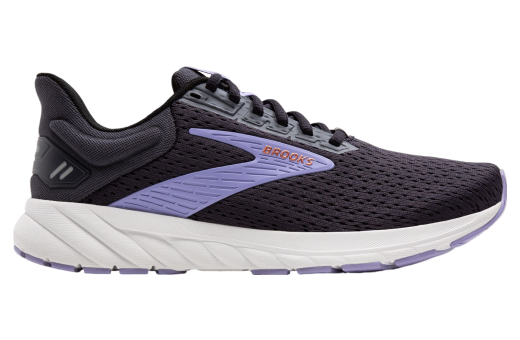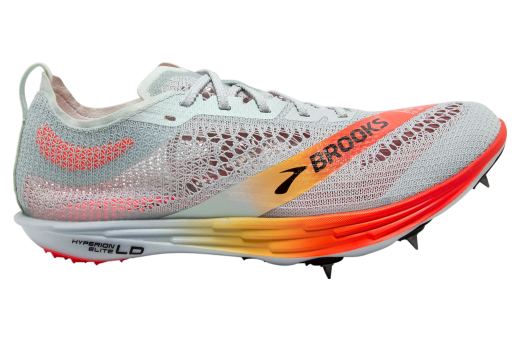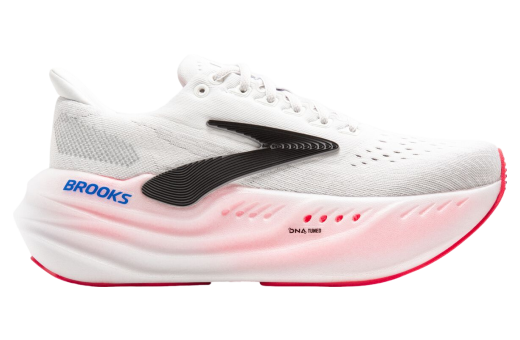Brooks
Brooks has carved out a distinct reputation in the sneaker industry, particularly renowned for its commitment to enhancing the running experience through advanced technologies and thoughtful design. Each pair of Brooks sneakers integrates innovative features aimed at improving comfort, performance, and injury prevention for runners of all levels. Central to their design philosophy is the use of BioMoGo DNA and DNA Loft cushioning in the midsoles, which adapt to the unique stride of each runner, offering a personalized blend of responsiveness and support.
Beyond cushioning, Brooks sneakers often incorporate the GuideRails support system, promoting natural foot motion and stability by reducing excess movement. This feature, coupled with breathable mesh uppers and durable rubber outsoles with segmented crash pads, ensures runners experience optimal comfort, ventilation, and traction throughout their runs. Brooks also offers specialized models tailored to different running styles, including neutral runners and those needing extra support for overpronation, demonstrating their commitment to catering to diverse athletic needs. Whether you're training competitively or running for leisure, Brooks sneakers continue to set the standard for performance-driven footwear that prioritizes both comfort and durability.
History of Brooks
The History of Brooks Running: A Journey Through Innovation, Challenges, and Triumph
Early Beginnings
Brooks Running can trace its origins back to 1914 when Morris Goldenberg founded the Quaker Shoe Company. Based in Philadelphia, the company initially focused on producing ballet slippers and bathing shoes. This period was marked by notable events in America, such as World War I, which shifted manufacturing priorities nationwide. Despite these turbulent times, the company managed to endure and adapt.In 1920, the company underwent a significant transformation when it was acquired and renamed Brooks Shoe Manufacturing Co., Inc. by John Brooks Goldenberg, Morris’s son. The company slowly shifted its focus towards athletic footwear, a decision that would lay the groundwork for Brooks' future successes. Throughout the 1930s and 1940s, Brooks expanded its product line to include a wider variety of shoes, from baseball cleats to children’s shoes.
Post-War Adaptations and Innovations
The post-World War II era brought prosperity and growth to many American industries, including footwear. Brooks capitalized on this economic boom by innovating and diversifying its offerings. The company introduced its first specifically-designed running shoes in the 1950s, recognizing the increasing popularity of distance running and track sports.The 1960s marked a significant milestone. Not only did the company start producing specialized shoes for various sports, but it also began to earn a reputation for quality and performance. This was a decade of athletic prowess and public fascination with fitness, evidenced by the rise of jogging as a popular pastime. Brooks' commitment to producing high-performance footwear ensured its place in this growing market segment.
The Running Boom and Brooks' Golden Era
The 1970s heralded a running boom in the United States, sparked partly by Frank Shorter's gold medal in the marathon at the 1972 Munich Olympics and a burgeoning national interest in personal fitness. Brooks was strategically positioned to take advantage of this trend.In 1974, Brooks introduced the Villanova, its first high-performance running shoe, named after the famed running program at Villanova University. However, it was the introduction of the Vantage in 1977 that cemented Brooks' place in the pantheon of running shoe innovators. The Vantage was one of the first shoes to feature what would later be known as EVA (ethylene-vinyl acetate) cushioning and a Varus wedge for added stability. This shoe earned the prestigious “Shoe of the Year” award from **Runner’s World** magazine in 1977, a critical endorsement that elevated Brooks’ status in the running community.
Trials and Tribulations
Despite the successes of the 1970s, the 1980s and early 1990s brought challenges. Brooks struggled with financial instability, shifting ownership, and manufacturing hiccups. Following several acquisitions and restructurings, including a notable purchase by the footwear conglomerate Wolverine World Wide in 1982, the company struggled to maintain its foothold in the intensely competitive athletic footwear market.However, innovation remained at the heart of Brooks' strategy. The brand continued to introduce notable technologies, such as HydroFlow, designed to provide unparalleled cushioning, and Diagonal Rollbar (DRB), aimed at enhancing stability. Yet, financial instability overshadowed these technological advancements.
Road to Recovery and Modern Renaissance
The late 1990s and early 2000s marked a significant turnaround for Brooks Running. A new leadership team, spearheaded by CEO Jim Weber who took the helm in 2001, made pivotal changes. One of the most crucial decisions was to refocus exclusively on running. This bold move eliminated distractions and positioned Brooks as a specialist in running footwear, unlike its competitors who offered multi-sport products.The launch of the Adrenaline GTS (Go-To Shoe) in 1999 was a turning point. This model featured Progressive Diagonal Rollbar (PDRB) technology and quickly gained popularity among runners who sought stability and comfort. The Adrenaline GTS series went on to become one of Brooks’ best-selling models and played a vital role in its resurgence.
In 2010, the company introduced the "PureProject" line, catering to the minimalist running shoe movement. These shoes aimed to provide a more natural running experience. While not as commercially successful as hoped, this project exemplified Brooks' commitment to innovation and adapting to market trends.
Brooks Running Today
As of the 2020s, Brooks Running is a formidable player in the global running shoe market. The company has continuously emphasized research and development, incorporating insights from biomechanics to craft superior running footwear. The brand’s DNA AMP, GuideRails, and updated midsole materials reflect its dedication to enhancing the running experience.Endorsements and collaborations have also played a role in Brooks' modern success. High-profile athletes, trainers, and running clubs worldwide have partnered with the brand, further cementing its place within the running community.
The company has also embraced sustainable practices, committing to reducing its environmental footprint. Initiatives such as the use of recyclable materials and eco-friendly production processes align with growing consumer demand for responsible corporate behavior.
Conclusion
The history of Brooks Running is a testament to resilience, innovation, and strategic focus. From its early days as a modest shoe manufacturer to its place as a leading brand in the global running community, Brooks has navigated through economic downturns, ownership changes, and fierce competition. Its commitment to producing high-quality, performance-oriented running shoes has earned it a loyal following among runners worldwide.Brooks Running’s journey reflects the broader trends in American industry and consumer culture, illustrating how a company can adapt and thrive amidst changing times and tastes. Today, Brooks stands as a symbol of dedication to the sport of running, continually striving to help athletes achieve their best while maintaining a commitment to innovation and sustainability.


